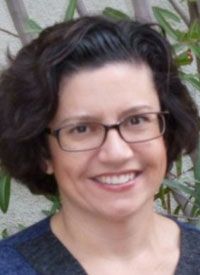XRAYS Aims to Help Patients, Survivors Make Sense of Research News
For oncology practitioners fielding questions from patients and survivors about breast cancer or genetics research news they've read online or through social media, a recently-launched news and information rating resource hopes to make that process easier.
Lisa Rezende, PhD

Lisa Rezende, PhD
For oncology practitioners fielding questions from patients and survivors about breast cancer or genetics research news they’ve read online or through social media, a recently-launched news and information rating resource hopes to make that process easier.
The project, from Facing Our Risk of Cancer Empowered (FORCE) and funded by the Centers for Disease Control and Prevention, aims to be "a reliable resource designed to help young breast cancer survivors and high-risk women navigate through breast cancer research related news and information," according to FORCE's website.
Nicknamed XRAYS (eXamining the Relevance of Articles for Young Survivors), the project actually started with a message board, explained FORCE Director of Education Lisa Rezende, PhD. She and her colleagues were noticing more and more questions on FORCE's message board about the potential of early-phase studies in animals and very small human-population trials.
Rezende says one basic science study looking at BRCA and rat brain development alarmed several people on the message board.
"Some report had 'BRCA' and 'seizures' in the same sentence because this was a brain development study," says Rezende. "It started making people concerned that they were at some sort of risk, when that wasn't what the study was saying at all."
This growing trend of concern—and misunderstanding—led the team at FORCE to come up with a plan.
"It was those sorts of concerns that made us see that we needed to have somebody monitoring the media, monitoring conversation on social media about media reports and writing the articles from the perspective of the patient."
Though XRAYS was first evaluated in a small study, the project is now a full-fledged operation with room to expand.
As a team, Rezende and Julie Hyunh, a FORCE research associate, identify research gaining significant attention and discussion in the mainstream media and some specialty publications.
From there, Hyunh will examine primary scientific literature, write a summary of her findings and rate the information using a custom rubric.
The XRAYS rubric rates research articles on a 15-point scale. Five points are assigned to three areas: overall research design (which accounts for the study's control, sample size and construction), analysis of the study (which asks whether the data answers the study's question) and relevance to young breast cancer survivors.
Once the score is determined and agreed upon, Rezende and Hyunh then send their report to FORCE's advisory board, made up of active researchers and clinicians in cancer, genetics, surgery, behavioral health, policy and survivorship. According to the FORCE website, an XRAYS report will not be published without approval from one or more members of their advisory board.
The educational benefit of XRAYS is twofold, said Rezende:
"The immediate thing we wanted to do was have something set up where we can have a systematic way to respond and talk about these studies that are in the news from the patient's perspective."
As time goes on, Rezende said she hopes to get their audience to a point where they can understand, dissect, and verify a study or news article themselves.
There are not enough outlets looking at research and news from a patient's perspective, Rezende noted. Whether it's a patient, survivor, or caregiver reading, she says she hopes XRAYS will answer the question, "What does this mean for me?"
Rezende hopes XRAYS becomes a place for breast cancer survivors to turn for information. In the end, though, it comes down to the letter E in FORCE's motto and name: Empower.
"We hope that it will [allow] women to feel empowered to talk to their doctors and ask them questions and feel like they have some understanding.”


